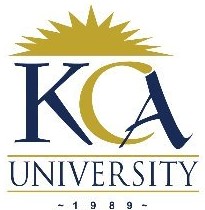
UNIVERSITY EXAMINATIONS: 2016/2017
EXAMINATION FOR THE DEGREE IN BACHELOR OF BUSINESS
INFORMATION TECHNOLOGY
BBIT 209 DECISION SUPPORT SYSTEMS
MODE: FULL TIME/PART TIME/DISTANCE LEARNING
ORDINARY EXAMINATIONS
DATE: AUGUST, 2017 DURATION: 2 HOURS
INSTRUCTIONS: Answer question ONE and any other TWO questions
QUESTION ONE [20 MARKS]
a) Briefly explain any THREE capabilities of computing that can facilitate managerial
decision making.
[3 Marks]
b) Explain why it is important to classify a problem.
[2 Marks]
c) Define the terms:
i. Decision
ii. System
iii. Decision support system
[3 Marks]
d) Using examples, explain how computers can provide support to semi-structured and
unstructured decisions.
[4 Marks]
e) Explain the reason why it is difficult to give a historical chronology about decision support
systems.
[4 Marks]
f) Describe THREE characteristics of a decision support system.
[3 Marks]
g) Describe any THREE types of information that a decision support application might gather
relevant to a business.
[3 Marks]
h) Discuss the THREE secondary dimensions of the extended DSS Framework.
[3 Marks]
i) Discuss any three types of management information systems.
[3 Marks]
j) Explain why it is so important to include a model in a DSS.
[2 Marks]
QUESTION TWO [20 MARKS]
a) KCAU enrolment department wishes to create a model to help them make some important
decisions on student enrolment. The university runs certificate, diploma, undergraduate and
post graduate programs. The revenue (fee collection) vary depending on the program.
Assuming the university doesn’t want to exceed a total population of 3000 students in a
trimester. Assume the fee is 35000, 45000, 65000 and 90000 for certificates, diplomas,
undergraduates and postgraduates respectively. Create a summary of three different
scenarios on possible revenue generated by varying number of students.
[8 Marks]
b) Discuss the typical components of a DSS.
[3 Marks]
c) Describe any THREE issues to be addressed when building a decision support system.
[3 Marks]
d) Briefly explain the differences between decision support systems and each of the following:
i. Supply chain management
ii. Enterprise Resource planning
[4 Marks]
e) Describe any TWO disadvantages of providing decision support through
virtual worlds
[2 Marks]
QUESTION THREE [20 MARKS]
a) Compare and contrast effectiveness and efficiency, the performance measures for
evaluating and analyzing the system.
[4 Marks]
b) Describe FIVE characteristics of groupwork.
[5 Marks]
c) Decision making happens at all levels of organization. Explain the different types of
decisions making at each level, with examples.
[3 Marks]
d) Explain TWO advantages and TWO disadvantages of using groups in decision making.
[4 Marks]
e) Explain the concept of RFID.
[2 Marks]
f) State difference between active tags and passive tags.
[2 Marks]
QUESTION FOUR [20 MARKS]
a) Describe the generic steps in decision making.
[5 Marks]
b) Explain the rationale for evaluating alternatives in decision making.
[4 Marks]
c) Discuss seven qualities of data that impact on the quality of decisions that managers make.
[7 Marks]
d) Briefly discuss the following concepts with regard to decision making in real world.
i. Manager filters
ii. Organizational inertia
[4 Marks]
QUESTION FIVE [20 MARKS]
a) Briefly explain the following trends in decision support systems
i. Intranets and portal
ii. Personalization and customization of information
iii. Extranets and collaborative commerce
[6 Marks]
b) Briefly describe what-if-scenarios as a trend in decision support.
[3 Marks]
c) Define the concept of data warehouse and explain how data warehousing can help a
business to manage its assets.
[4 Marks]
d) Outline any THREE software tools of group decision support systems.
[3 Marks]
e) Briefly describe the following ESS types:
i. Classification
ii. Diagnosis
iii. Advise
iv. Planning
[4 Marks]
